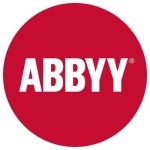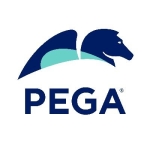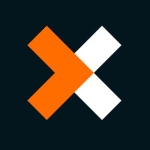What is our primary use case?
My primary use case is to build automation. We started with building automation for enterprises, then shifted to Intelligent Automation, and currently, we are using it for Agentic Automation.
By implementing UiPath, we wanted to solve different kinds of problems. The major one is where people are taking a lot of time to do mundane and repetitive tasks. Some processes have a lot of repetitive steps and a high business volume. We automated those processes. After that, we shifted to something called Intelligent Automation to process scanned documents such as bank invoices, PDFs, etc.
We are now working on use cases with Generative AI for building intelligent applications on top of automations.
How has it helped my organization?
Agentic Automation helps with use cases without fixed input and output. Previously, when we were only restricted to robotic process automation, we had to schedule the processes weekly or monthly. Whenever human intervention was required, it was a long loop. For business use cases where we needed a chat interface, we had to go for a different solution altogether and then integrate it with the automation. Agentic Automation helps with all use cases where a person gives unstructured input, such as a person wants to know where his order is or why his account was debited 300 dollars. To cater to all the use cases where inputs and outputs are not fixed, we use Agentic Automation.
The biggest benefits of Agentic Automation have been customer satisfaction and time to respond to queries. We used it for a use case for the L1 support of a client. Previously, the client's customer would call or message on chat, and a human would respond. The support person will go to the system, look for the query, and then revert on the chat or on the call. With the implementation of Agentic Automation, we have enabled the smart AI assistant for the company, so anybody can type anything onto that AI agent, and it is able to understand the context and the background. It knows who the user is, and it fetches all the details. It reduces the time of the support people. They can now focus on more important things rather than repetitive tasks. The response time to the customer is reduced, and user satisfaction has increased. It is also easy to scale. Tomorrow, if the volume of inquiries increases from 10 to 10,000, they do not have to hire more people. They just have to scale their AI agents.
We have had one or two use cases of UiPath Communications Mining. In one use case, the customer had a huge set of data in its on-prem environment, and they wanted to process a list of emails. They were a big hotel chain in the north of the US. They had a support mailbox where a lot of people sent emails related to the services, inquiries, etc. They wanted to monitor and categorize them into actionable insights to identify which features people liked or did not like. With UiPath Communication Mining, they extracted the information, bucketed the email, and got actionable insights. UiPath Communication Mining also gives you things that you need to prioritize. For example, they found out that a lot of people were complaining about the swimming pool, so they knew that the swimming pool was the first thing they needed to improve upon. UiPath Communications Mining was helpful for such actionable insights. After that, we used other products of UiPath, such as UiPath Studio, Orchestrator, or Action Center to build a complete cycle. UiPath Communications Mining turns every message into actionable data in real time, which means that you get insights within a fraction of a second of receiving emails.
UiPath Communications Mining helps automate actions or responses according to the type of content in the message. If they receive a customer email saying that they have to cancel their visit, they can categorize it into a cancellation request. Most of the time, it is able to identify content on its own. If it requires human input, it shows a pop-up on your screen where you can confirm a hotel cancellation request. As soon as you click on confirm, that date is available for other customers. An email is triggered to the support or the customer confirming the cancellation.
The insights from UiPath Communications Mining help the administration people to see what is working and what is not working. In this hotel use case, they can see that out of 1,000 emails, how many were for cancellation and how many were complaints. It provides information about the volume. You can drill into a specific category. It helps prioritize the issues.
The UiPath Communication Mining reduced the time of staff from three hours to fifteen minutes.
The introduction of autopilot into the UiPath products has made work easier. A lot of beginner developers are able to write automation by just giving a prompt. While doing the development and automation, if you are stuck at some point where you need syntax or code, within UiPath Studio, you can request the code. You do not have to search for the solution on the web. With a prompt, you can create an automation to read a PDF and convert it to Excel. It is absolutely low-code. Coding-wise, it is much easier than before.
UiPath provides good support for on-premises environments, which works very well for banks and other businesses that cannot go to the cloud. They have very good enterprise support and a dedicated team supporting on-premises. Their product managers work directly with customers. They continue to add things on the on-prem side. In addition to UiPath Studio, they have added AI Center, Document Understanding, Action Center, etc. They are putting all the things on-prem. They are able to cater to all use cases.
UiPath helps reduce human errors by 70% to 80%. About 20% of human errors are always there because new users are onboarding and systems are changing. You can even reduce them by 90% if your process is extremely streamlined and no human is involved. This reduction varies depending on the use case.
UiPath saves a lot of time and costs for our customers. For one of the use cases, the time taken was reduced from three hours to fifteen minutes. It also helps customers meet compliance.
What is most valuable?
The best thing about UiPath is that it is an end-to-end enterprise solution. Other agentic solutions are available, but UiPath has the entire enterprise suite to build the robots, which means native integration with enterprise applications like Teams, Outlook, and Excel. It has everything needed for day-to-day processes.
The UiPath AI Trust Layer provides data security assurance to customers, making it a trustworthy enterprise solution.
The UiPath Community has been a big support for me as a developer. UiPath has a very strong community. If I have a doubt or question, I can post it in the UiPath community, and people are there to help. UiPath rewards people who are helping others with some kind of reward points. It keeps the environment healthy and ensures that all the answers are genuine. People are ready to help, and in return, they get recognition. They sometimes get certification vouchers. UiPath has motivated a lot of people to contribute to the community. For a technical issue, about 90% of the time, an answer is available in the UiPath forum. Their Community Managers work hard to bring everything together.
UiPath has been up to date with the trend. It has evolved from being just RPA to Intelligent Automation, then to having robots for every person, and now towards Agentic Automation. UiPath has catered to everything from requirement gathering to coding, testing, deployment, pre-production, production, building chatbots, human-in-the-loop, etc. Everything is there in a single platform. Customers do not have to think about dealing with multiple companies. They just deal with one company for all components.
As a services company, we constantly have to train people based on the projects. If we are expecting a project on Document Understanding, our staff has to go to UiPath Academy and complete the Document Understanding course. It is one of the best courses I have come across as a developer. UiPath Academy also has quizzes, tests, and certifications, which help us to evaluate people. I do not have to keep a check on that. The developers just have to submit the final score. As a company, it saves a lot of time. UiPath Academy certification also adds credibility when we meet our customers.
What needs improvement?
There is a need for more integrations with external technologies like OpenAI, Gemini, SAP, Bedrock, BambooHR, etc. While UiPath currently has major integrations, as new software is adopted by customers, it would be beneficial if UiPath adds more integrations. They do allow building custom connectors, but having a comprehensive integration library would be beneficial.
For how long have I used the solution?
I have used UiPath for eight years.
What do I think about the stability of the solution?
In terms of the cloud environment, it is absolutely stable. In eight years, there have been virtually no downtime instances. UiPath has backup servers, making cloud deployments extremely reliable. On-prem stability depends on the company's management.
What do I think about the scalability of the solution?
Scalability is excellent. The solution is capable of scaling with just a few clicks. We can increase users from 10 to 50 effortlessly. This flexibility makes it highly scalable.
Our clients are mostly enterprises. We have more than 30 specialists. We also work with vendors, totaling about 150 specialists.
How are customer service and support?
I would rate their support an eight out of ten.
How would you rate customer service and support?
Which solution did I use previously and why did I switch?
I have not used Automation Anywhere or Blue Prism, but I have used Microsoft Power Automate. Power Automate is suitable for small tasks with low to medium complexity, whereas, for more intensive enterprise-level and scalable automation, UiPath provides the necessary capabilities.
UiPath also offers the flexibility to write custom code. If needed, I can write C# or Python code, which is missing in the competitors. This capability enables us to build enterprise-level projects.
How was the initial setup?
The deployment model is a mix of cloud and on-prem, but most people are on the cloud. Two or three customers have deployed it on-prem.
The initial setup is super easy. They have a Community edition which is the free version. It is exactly similar to the Enterprise version, so that makes learning and deployment straightforward. I was able to deploy the Community edition in less than 30 minutes. The deployment is even shorter now.
The RPA automations require maintenance because they are highly dependent on the user interface. If a banking application that we automated got an update, your RPA solution will also need an update. Whenever there is an update happening in the base application, you will require an update. Otherwise, you are good. The second type of maintenance involves UiPath product updates. Every now and then, UiPath releases new features and versions.
What was our ROI?
It has mostly saved time, such as reducing support time from three hours to fifteen minutes. For cost savings, it depends, but significant savings have been seen with millions saved in some cases.
What's my experience with pricing, setup cost, and licensing?
As compared to the competition, its pricing is on the higher side. However, looking at the services you are getting, it is justified. It allows you to cater to more use cases.
What other advice do I have?
I would recommend trying the Community edition first and then doing the Enterprise trial to test all the offerings. Evaluate the short-term and long-term roadmap and compare products before making a decision.
Overall, I would rate UiPath a nine out of ten as there is always scope for improvement. It meets all our day-to-day needs.
Disclosure: PeerSpot contacted the reviewer to collect the review and to validate authenticity. The reviewer was referred by the vendor, but the review is not subject to editing or approval by the vendor. The reviewer's company has a business relationship with this vendor other than being a customer: Partner




















